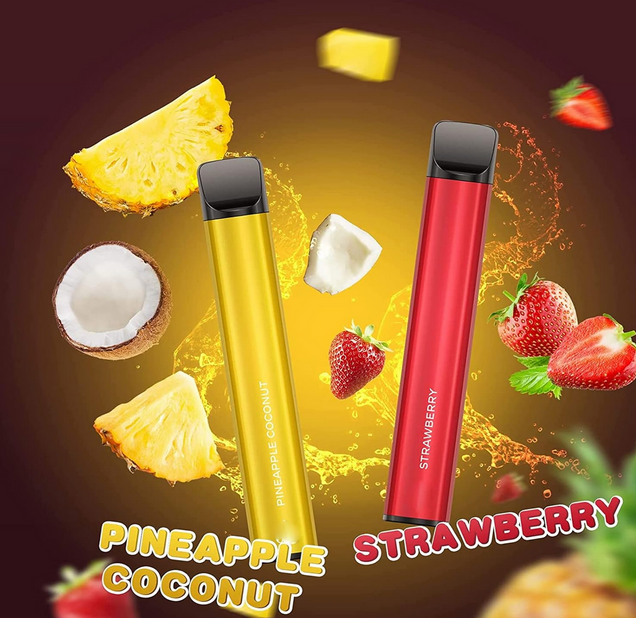AI-driven Research Reveals Youth-Targeting Strategies of Tobacco Companies
A new study led by Boston University reveals that regulatory loopholes have allowed tobacco companies to target youth using social media. Findings suggest that enforcement of Food and Drug Administration (FDA) health warnings on social media may reduce youth engagement with tobacco marketing.
Amid declining cigarette sales and stricter regulations, tobacco companies have turned to synthetic nicotine products like e-cigarettes or vapes. Marketed with flavors like bubblegum, cotton candy, pink lemonade, and twinkee, there is growing concern that these products are not only targeting teens and young adults, but flouting FDA guidelines on their associated health risks.
A new study led by Boston University, analyzed the promotional content shared by synthetic nicotine brands on Instagram, one of the most widely used social media platforms among US teenagers. Published in the Journal of the American Medical Association (JAMA) Open Network, the findings expose just how noncompliant manufacturers are when it comes to promoting their synthetic nicotine brands in compliance with FDA health warning requirements.
Synthetic nicotine is a highly addictive nicotine substance that is created in a laboratory rather than from tobacco leaves. E-cigarette aerosol can also contain cancer-causing chemicals, heavy metals and other substances that are harmful. Alarmingly, synthetic nicotine is widely available online even on platforms that prohibit tobacco product sales, such as Amazon, eBay and Google Shopping.
The FDA passed a requirement in 2022 that says health warnings need to take up 20% of the advertising and appear in the upper portion of the advertisement for e-cigarettes that contain synthetic nicotine.
“Because synthetic nicotine isn’t derived from tobacco, it evaded the regulatory authority of the FDA until April 2022,” says corresponding author Traci Hong, a Boston University professor of communications and Hariri Institute core faculty. “This regulatory loophole allowed manufacturers to flood the market with synthetic nicotine products with flavors previously banned in traditional tobacco products due to their appeal to youth. Additionally, these products were often marketed as “tobacco-free nicotine”, fostering positive perceptions and potentially increasing trial among youth.”
Adds Dr. Jiaxi Wu, lead author, BU alumna, and postdoctoral fellow at the Annenberg School for Communication, “This study shows the urgency to share evidence-based research with the FDA and policymakers to deter the uptake of tobacco products.”
Failing to Comply with FDA Health Warning Requirements
To analyze FDA compliance of marketing tactics, the researchers developed a computer vision algorithm – a type of artificial intelligence that enables computers to perceive and understand information from visual data – to analyze over 2,000 Instagram posts from 25 different synthetic nicotine brands. Their analysis found that the vast majority (87%) did not include warning labels informing users about the health risks. In fact, only 13% of posts complied with both FDA health warning requirements.
Social Content Targeting Youth
 The type of content posted aligned with previous research indicating flavors appeal to youth. 74% of the posts featured flavored projects, often showing visually appealing fruits or desserts. Those posts that featured people, showed them engaged in vaping, which research shows increases the urge to vape.
The type of content posted aligned with previous research indicating flavors appeal to youth. 74% of the posts featured flavored projects, often showing visually appealing fruits or desserts. Those posts that featured people, showed them engaged in vaping, which research shows increases the urge to vape.
Measuring Engagement
Post comments rather than likes was used to determine audience engagement, a key indicator of how much audiences are enjoying and connecting with the post content. “Although it is easy to like a post, a user needs to exert more effort to comment on a post, suggesting more engagement,” says Hong.
 In their content analysis, the researchers found that health warnings can lower social media engagement. Posts with health warnings received an average of 5.4 comments, while those without health warnings received an average of 1.8 comments. Furthermore, larger warning labels led to even fewer comments.
In their content analysis, the researchers found that health warnings can lower social media engagement. Posts with health warnings received an average of 5.4 comments, while those without health warnings received an average of 1.8 comments. Furthermore, larger warning labels led to even fewer comments.
“Posts with higher engagement tend to gain more visibility on social media.” says Hong. “So, by reducing engagement, content with health warnings may have less reach among young audiences.”
Study Methodology
For the study, the researchers developed a new computer vision algorithm they named “Warning Label Multi-Layer Image Identification (WaLi).” This algorithm integrates the computer vision library OpenCV and the open-source OCR (Optical Character Recognition) engine Tesseract to detect the presence of health warnings and whether those warnings comply with FDA guidelines on tobacco promotion. They applied the algorithm with a quantitative content analysis to analyze over 2,000 Instagram posts from 25 brands over a 14-month period (August 2021 – October 2022).
Specially WaLi was used to detect the presence of health warnings and whether the health warning label (1) appeared on the upper portion of the advertisement within the trim area and (2) occupied at least 20% of the advertisement’s area, per FDA guidelines for print advertisements of tobacco products.
For video posts, the researchers took still images of the first frame of all the videos in the sample to pass through WaLi. They manually validated WaLi on all collected 2184 images, 969 of which had warnings and 1215 that did not. The overall accuracy of WaLi to detect the presence of health warnings in our dataset was 99%, with recall of 98%, precision of 100%, F1 score of 99%, and Hamming Loss of 1.2%.
In 1998, the Master Settlement Agreement (MSA) was established to settle lawsuits between four of the largest tobacco companies and 52 state and territory attorneys seeking to recover billions of dollars in health care costs associated with smoking-related illnesses. While today the stated purpose of the Master Settlement Agreement (MSA) is “to reduce smoking in the U.S., especially in youth,” agreed upon strategies are antiquated. For example, the agreement prohibits promotion of tobacco products on televisions shows but does not prohibit their promotion on social media – where a reported 95% of youth ages 13–17 are users, some using it “almost constantly.’”
“Although there are not yet social media-specific guidelines for tobacco and nicotine marketing, our findings suggest that warning labels in promotional content reduce engagement and could deter use of nicotine products.”
